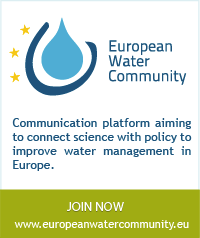-
Summary description of project context and objectives,
The implementation of the Water Framework Directive (WFD) and its daughter directives, as well as the Floods Directive, is not a “Business-as-usual approach” and constitutes an exceptional challenge to water managers and governments across Europe. Assessments of the current status of implementation have shown that less than 40% of water bodies will meet the Good Ecological Status in 2015.
Meeting these objectives in the long run will require additional knowledge and know-how in terms of designing measures and management approaches. This knowledge is however to a large extent generated by EU-funded research, but insufficiently applied to address the challenges occurring in the context of WFD implementation. This concern is shared by many stakeholders, water managers and researchers alike, who have a strong interest in boosting the transfer of research outputs to the real life, like it is shown by the initiative led by some members of the CIS group (WFD Common Implementation Strategy) to run a dedicated SPi (Science-Policy interfacing) working group.
The concept of the project is to add an intermediate step after research, like a marketing team in the industry. This step further is developed closely with the stakeholders by involving them within a social network, the European Water Community, for promoting exchanges between the target groups, which mainly includes:
• the researchers, as individual knowledge holders and as members of European consortiums, and the research funding bodies at national level.
• the practitioners, with decision makers (basin authorities, municipalities) and «doers» (suppliers of technologies, consultancies, operators). It is necessary to convince both the ones who accept to host innovation and those who take the risk to develop innovative processes.
All actions undertaken by the WaterDiss2.0 project are consistent with the “SPI European Water cluster” activities conducted by the tree projects WaterDiss2.0, STREAM and STEP WISE.
Description of the work performed since the beginning of the project and the main results achieved so far,
Collecting and analysing project outputs
The objectives of the WP1 were mainly to gather information about European water project outputs and to develop a dissemination methodology for these outputs (whichimplies the development of an output analysis methodology).
To reach theses objectives, 63 water research projects have been identified.
Several projects were studied more in depth by identifying project objectives, outputs, embedded dissemination activities, and potential future impact of the outputs.
Based on the information collected, an in-depth analysis of the projects, of their dissemination activities and the uptake of ouputs, was performed. Main barriers and facilitators were highlighted and semi-structured telephone interviews with selected stakeholders were conducted in order to gather information on their specific needs and to review the proposed methodology.
An Analysis grid was presented and discussed at the Consensus Conference (Berlin, November 2011), in order to validate our approach. By bringing together practitioners and scientists, the conference has contributed to a fruitful knowledge exchange and provided the platform for seizing opportunities to enlarge expertise. Feedback and comments from stakeholders, project coordinators and WaterDiss2.0 partners on the drafts were taken up and used to adjust and further develop the Analysis Grid. A final version was presented, which paved the way for the development of the Individual Dissemination Strategy (IDS) template.
In May 2012 starts the second step of the IDS review. According to feedbacks from Waterdiss partners and by integrating comments from the participants of a WaterDiss2.0 seminar* at the World Congress on Water, Climate and Energy in Dublin, the IDS template is now in its final version.
This IDS template is the main output analysis tool developed by the WaterDiss2.0 consortium and will lead tothe formulation of dissemination activities tailored to each selected output.
*The seminar responded to the need for support with producing policy recommendations from scientific research results, which had been voiced by several projects.
Developing dissemination tools
The WaterDiss2.0project has developed a communication platform to allow all water stakeholders to benefit from a common space dedicated to water research in Europe. This community is a communication platform with the aim to connect science with policy to improve water management in Europe. It is open to all those interested in the science policy interface, where you can exchange ideas and information regarding research projects, results and research needs between scientists, policy makers and water managers. As mentioned in the DoW, both groups can exchange on a regular basis for enhancing the trans-communications between research and practice.
This platform, called the European Water Community (EWC - www.europeanwatercommunity.eu), has been jointly designed and developed by OIEau and Tripnity. EWCalready gathers more than 400 members, coming from all sides of water management and policy across Europe.
During the first period of the project, the objective was to familiarize users and WaterDiss2.0 partners with this “water social networks”.
This objective is now reached with the creation of 65 thematic groups.
It is technically supported by Tweegg, manage by our partner Tripnity.
Organizing dissemination activities
Most of theactions undertaken by the WaterDiss2.0 consortium lie in the organization of dissemination events and facilitation of the European Water Community (EWC).
The first phase of the project has helped to refine methodologies and to define the most appropriate activities for good dissemination of research outputs, the objective being the ownership of these outputs by “end users”.
About the events dedicated to the dissemination, the WaterDiss2.0 consortium organized two brokerage events (A side event at Pollutec in Paris - Dec 2011 and a side event at the WWF6 in Marseille - March 2012) and two seminars (A seminar at the IWA-WCE Congress in Dublin - May 2012 and a workshop during the International Conference IS rivers – Lyon, June 2012). Feedbacks on brokerage events show edits effectiveness in communicating WaterDiss2.0 project activities and different methodologies developed for different types of events. Concerning the dissemination of research results,the first recommendation is that the summer schools, seminars and e-seminars seem more appropriate than brokerage events, targeting a wider audience.
The analysis of research outputs and the feedbacks on the organization of dissemination activities aim tomake recommendationsin terms of dissemination of European water research results.
Formulating evaluation, assessment and recommendations:
The objective of the WP4 is to develop a set of guidelines of future EU project dissemination, drawing from the lessons learnt throughout the evaluation undertaken as part of this WP.
To reach this objective, the first step is dedicated to an initial conceptual stage in which WaterDiss2.0 sets up an in-built evaluation framework which includes a multi-method and transversal approach through all project activities. In conceptual terms it was agreed to take on a multi-method approach of evaluation by combination of measurement of outcomes and procedures, qualitative and quantitative methods, intra-project and inter-project assessment. This approach would afford the most comprehensive overall assessment, and it would be open to include inputs from results of learning activities through the performance of the project.
At this stage of the project this task has been fully implemented, besides potential improvements that might be included thanks to the project progress. This framework entails the following:
- An approach and literature review of evaluating transdisciplinary projects
- An overall explanation on the in-house evaluation frame
- A set of indicators to evaluate not only project processes and results, but also the specificities of the IDS monitoring stage.
- A questionnaire framework to collect qualitative data, both from internal feedback from project partners and external feedback from external stakeholders in the project (project coordinators, end-users, external observers).
After the first 18 project months, some recommendations on research outputs dissemination were drafted and collected from findings of all project deliverables and discussions from the project meetings when exchanging feedbacks and experiences.
A first discussion among project partners risen up on above future guidelines and recommendations WaterDiss2.0 is able to produce at the end of the project. At this project stage of development, we have now a clear picture on the results WaterDiss2.0 will be able to provide for the better implementation of the Science Policy Interface. The first step we undertook was to agree among all partners where WaterDiss2.0 contribution in the Science Policy Interface is, then we agreed on the context and rationale of those recommendations, by identifying and characterizing project targets and the results to be further exploited.
Expected WaterDiss2.0 final results and their potential impact and use,
The final objective of the project is to lead to formulate recommendations to optimize the European water research dissemination. In other words, it is to improve the SPI.
Complementary to the work already done and to achieve this ultimate goal, the next steps of the project are:
- To analyse major outputs selected from the list of the 63 European water projects through the second IDS methodology;
- To test different dissemination methodologies through the organization of seminars, e-seminars and summer schools (use of video, interviews, webtools, methodology to reach a selected audience,…);
- To make available via EWC all water outputs analyzed and to test all the dissemination methods enabled by this tool (thematic access, creation of dedicated discussion groups, videos, diffusion of policy briefs, calendar of the European water research projects…)
The development of dissemination success stories for outputs selected will help in formulating recommendations.
The socio-economic impact will be a reduction of the research results time transfer from 12 to 5 years by an improvement of dissemination methods.
This will contribute actively to the achievements of the objectives of the WFD.
· Address of project public websites,
- Login to post comments











